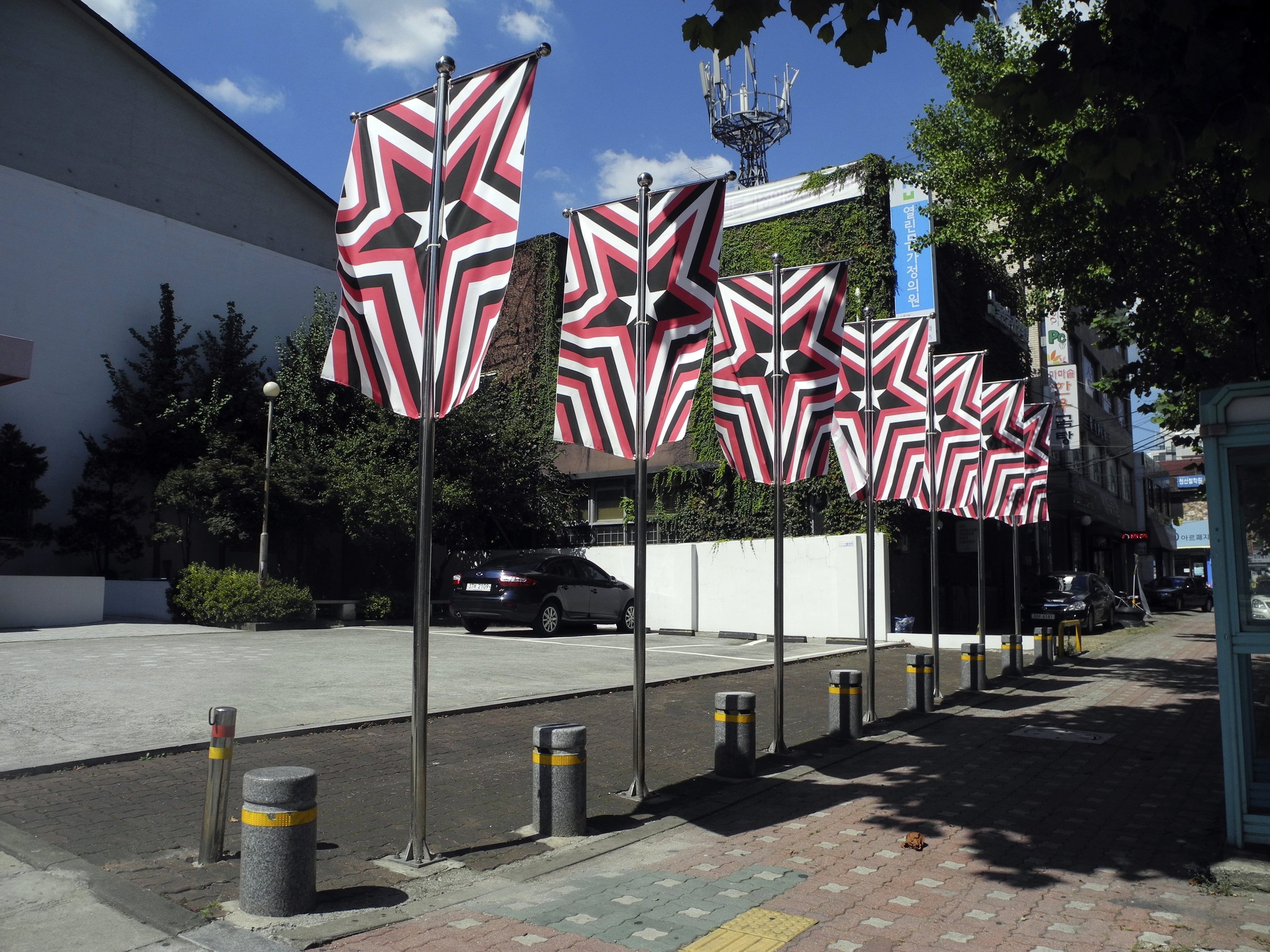
Flags of Aggression, 2014
Polyester. 14 flags each 180x30 cm
Flag installation in front of the National Museum of Modern and Contemporary Art, MMCA Residency Changdong, Seoul, Korea.
A singular image consisting of a pentagram pattern is spread over the two halves of each flag. The pentagram image is furthermore mirrored from the center - formed by the poles - in a kind of kaleidoscopic view; a view that is enhanced by the repeating of the same complex image in each of the seven poles. The visual effect of this iterative doubling is in itself disturbing. But at the same time it seems like the poles are cutting the flags in two halves adding a sense of splitting or aggression to the scenery.
The Flags of Aggression are held in red, white and black colors, a well-known and powerful color combination that often makes one think of states and nationalism. Politically is has been very popular throughout history as well as in present time.
Like the three colors the pentagram – the five-pointed star - is used in flag designs around the world, for example USA, EU, Soviet Union, China, North Korea, and the pentagram is also very popular in fashion and decoration. Also, in advertising and logos the pentagram is starring.
The pentagram has historically been thought to have magical powers and is even today used by occultists and contains a lot of different references according to where and how it is used. Basically, it represents a dualism between good and evil. One point up it depicts the spirits of the good, and two points up it is seen to represent the spirits of the evil underworld.
Photo: Hesselholdt & Mejlvang

